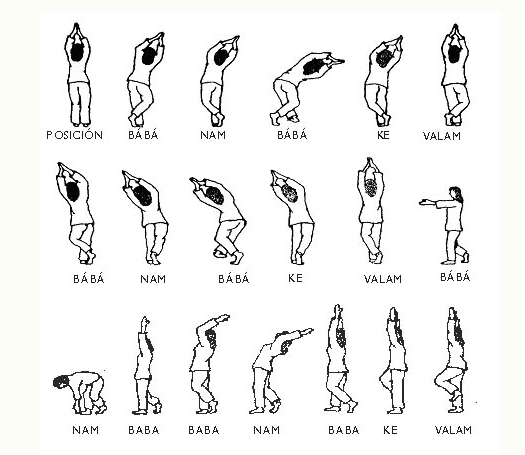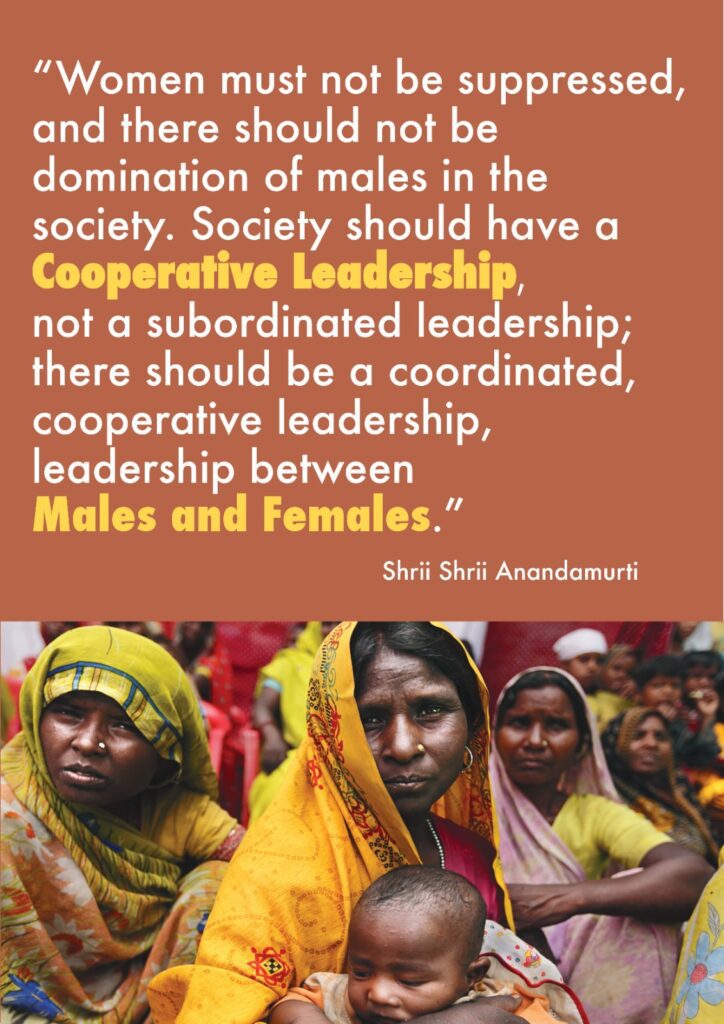The Kaoshikii dance was created by Shrii Shiri Anandamurti, the spiritual guide of the international Ananda Marga community. The term “Kaoshikii” derives from the Sanskrit word “Kosa” which means the deep layer of the mind. Through the practice of this dance, we seek to establish this connection with our Self, present in the deep layers of our mind, and the macrocosm.
This dance can be practiced by everyone and will be particularly beneficial for women: relief of pain associated with periods, regulation of the menstrual cycle or even easier childbirth. In addition, the many benefits attributed to it are among others:
increase in longevity, regulation of endocrine glands, increase in flexibility of the spine, decrease in insomnia, cure of many diseases (problems related to the kidneys, liver …), increase in self-confidence and expression self…
It consists of performing a series of chest movements associated rhythmically with a movement of the legs. The whole being coordinated on the rhythm of the repetition of the mantra: Baba Nam Kevalam (Love is everywhere).

Benefits of Kaoshikii
1. It exercises all the glands and limbs from head to foot.
2. It increases longevity.
3. It makes for easy delivery.
4. The spine will become flexible.
5. Arthritis of the spine, neck, waist and other joints will be removed.
6. Gout in the spine, neck, hands and waist will be lost.
7. The mind becomes strong and sharp.
8. Irregularities in menstruation will be cured.
9. Glandular secretions will become regulated.
10. Troubles in the bladder and urethra will be cured.
11. It gives control over the limbs.
12. It adds charm and shine to the face and skin.
13. It removes wrinkles.
14. It removes lethargy.
15. It cures insomnia.
16. It cures hysteria.
17. Fear complexes will be removed.
18. Hopelessness will be lost.
19. It helps in self-expression and develops one’s potentiality.
20. Spinal pain, piles, hernia, hydrocele in men, nervous pain, nervous disability will be cured.
21. It cures kidney and gall bladder troubles, gastric trouble, dyspepsia, acidity, dysentery, syphilis, gonorrhoea, obesity, thinness and liver diseases.
22. It increases the capacity to work until 75-80 years of age.






